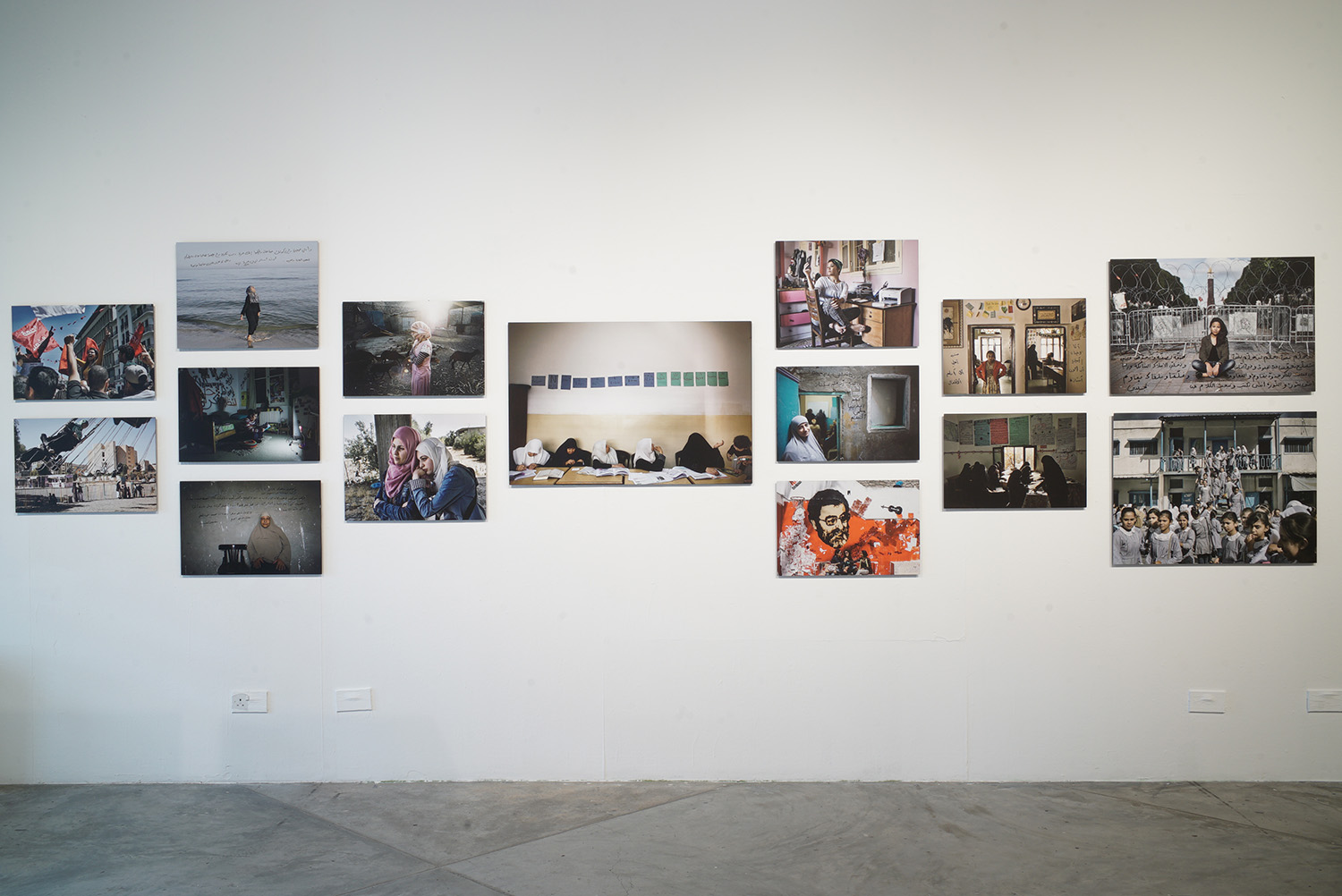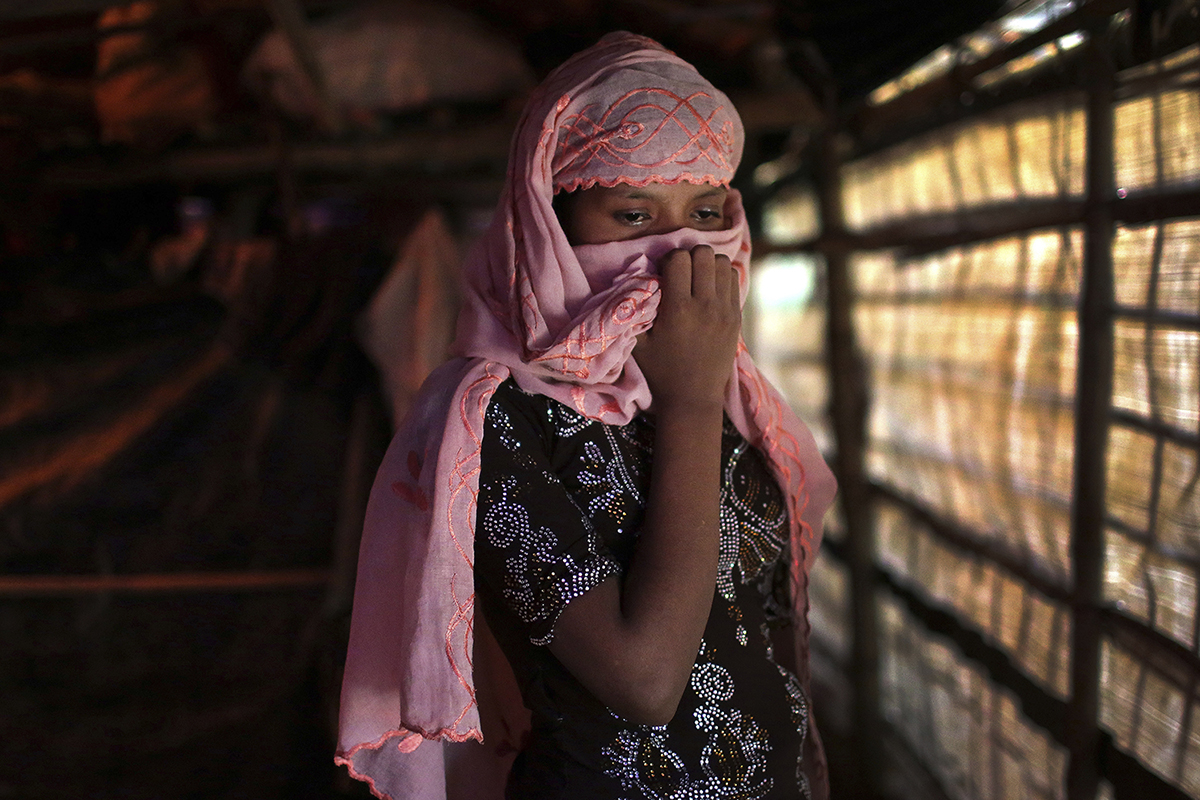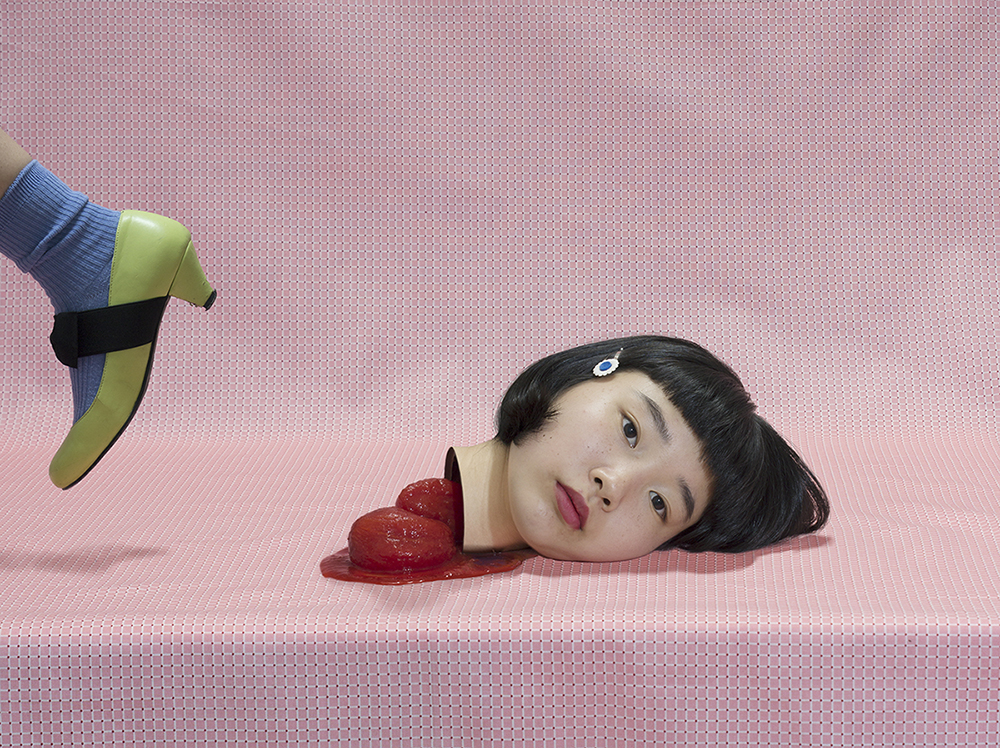Shows
“Women in Photography: Collective Power”


As part of its 2018 Women in Film and Photography showcase, Objectifs Centre for Photography and Film presented six international photographers whose works run the gamut from satirical narrative and self-portraiture to potent socio-political documentary, all reflecting the notion of “Collective Power.” More intentionally gender-driven in theme than in past editions, the exhibition dovetailed with current social movements such as #MeToo, but went beyond sexual harassment with its fraught portrayals of oppression and objectification in a global context. Visitors entering Objectifs’ Chapel Gallery were immediately confronted by two wall-sized images: one, by photojournalist Laura Boushnak, depicts a classroom of eager Yemeni schoolgirls; the other is a surrealist self-portrait by Izumi Miyazaki. Together, they embodied the dissonant aesthetic and conceptual energies that propel “Collective Power.”

Boushnak documents women in the Arab world attempting to overcome obstacles, whether political, religious or social, to gain access to education—a choice of subject matter inspired by her own struggle to attend university, despite family opposition. In over a dozen works from her series, “I Read I Write” (2009–18), Boushnak presents candid portraits of schoolgirls, activists and housewives, each illuminated by backstories that detail their efforts to attain literacy.

Documenting inconceivable violence and persecution is Associated Press photojournalist Wong Maye-E’s series, “All I Have Left Are My Words” (2017–18), taken during visits with colleague Kristen Gelineau to refugee camps in Bangladesh, which house Rohingya Muslims fleeing Myanmar’s campaign of ethnic cleansing. Wong’s images chronicle women and girls who have suffered rape by Myanmar soldiers, and who have witnessed the murder of their families. Gelineau’s accounts of brutality, loss and shame accompany Wong’s sensitive portraits, in which faces are averted and concealed under bright scarves.
Exploring photography’s relation to memory and imagination is Karen Miranda Rivadeneira’s series, “Other Stories / Historias Bravas” (2008– ), in which the artist reenacts episodes from her youth—not out of nostalgia, but as a “means for reflection and a search for truthfulness.” In her retro-fictions, Rivadeneira collaborates with family to create perplexing tableaux associated with folk traditions: praying to rain, blessing breasts, purification of the evil eye. In one mannered reverie, titled Mom healing me from my fear of iguanas, by taking me to the park and feeding them every weekend, ca 1994 (2012), mother and daughter pose, surrounded by the dreaded reptiles.
Haley Morris-Cafiero gazes outward rather than inward with her performative series, “Wait Watchers” (2013–15). Here, Morris-Cafiero injects a liminal gap between street photography and performance, the candid and the orchestrated, by positioning herself as a quiet focal point in a busy public space; she then arranges to be photographed with the intent of capturing stray expressions of strangers reacting to her. In this shrewd rejoinder to body shaming, her unassuming acts (eating ice-cream, reading a map) attract critical looks and mocking body language—micro-judgments as reflexive objectification, triggered by a woman’s physical appearance—and expose our own censorious, unspoken assumptions.
Habiba Nowrose also ponders the female façade in her ongoing series “Concealed” (2013– ), which explores how women feel compelled to alter appearance based on family, social and personal expectations. In ten unframed portraits, Nowrose envelops women in bewildering arrays of fabric and pattern. Leaving no flesh visible (arms are shrouded in orange tights; faces obscured by hot pink wigs and lace), Nowrose’s vivid ornamentation nullifies the individuality of her subjects.
Conversely, Izumi Miyazaki dissects elements of persona, manipulating color and symbolism to generate critical deconstructions of Self. In “Selfportrait” (2013– ), Miyazaki’s eccentric images are at first amusing, then unsettling, as they vacillate between self-loathing and narcissism—what the artist references as interior dialogues between “bad self” and “good self.” Outwardly impassive, Miyazaki renders her conflicted personae in droll dreamscapes (many of which involve food) that belie an underlying savagery: in one, she depicts her skull as a broken egg, yolk pouring onto a fresh bowl of rice; in another, her severed head oozes pulpy tomato sauce as a jaunty lime-green high heel exits the scene.

“Collective Power” juxtaposed urgent documentarian issues alongside critical conceptual narratives, a complementary approach that elevated this year’s showcase. Addressing issues of violence, oppression and identity, these six photographers avoid the formulaic and animate their work in visually provocative, profoundly feminist terms.
“Women in Photography: Collective Power” is on view at Objectifs Centre for Photography and Film, Singapore, until November 18, 2018.







